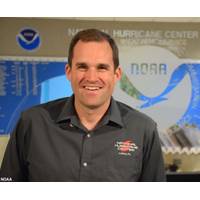
Brennan Named Director of NOAA’s National Hurricane Center
partners — along with experience working across NOAA and with other federal agencies to ensure the multifaceted execution of the Nation’s Hurricane Forecast and Warning program.He earned a Bachelor in Meteorology, and a Masters and Ph.D. in Atmospheric Science, all from North Carolina State University.“I had the pleasure of working with Mike for four years at NHC, where I observed his steadfast dedication to the mission of saving lives and property,” said Ken Graham, director of NOAA’s National Weather Service. “Mike is an innovator who has built incredible
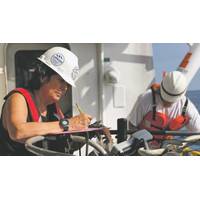
Below-average Gulf of Mexico ‘Dead Zone’ Measured
measured size (black dashed lines). (LUMCON/LSU/NOAA)Exposure to hypoxic waters has been found to alter fish diets, growth rates, reproduction, habitat use and availability of commercially harvested species like shrimp. This year, for the first time, scientists from NOAA Fisheries and North Carolina State University began using an experimental model to better understand where shrimp could be found relative to the hypoxic zone.Investments in understanding and addressing hypoxiaThe Hypoxia Task Force is accelerating progress in reducing excess nutrients in the Mississippi/Atchafalaya River Basin by
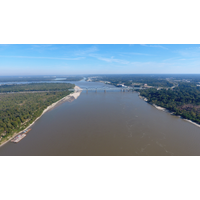
NOAA Forecasts Average Summer 'Dead Zone' in the Gulf of Mexico
is the fifth year NOAA has produced a dead zone forecast using a suite of models jointly developed by the agency and its partners — teams of researchers at the University of Michigan, Louisiana State University, William & Mary’s Virginia Institute of Marine Science, North Carolina State University, Dalhousie University and the U.S. Geological Survey (USGS), who provided the Mississippi River nutrient loading data for the models. NOAA integrates the results of these multiple models into an aggregate forecast and releases the forecast in coordination with these external groups,
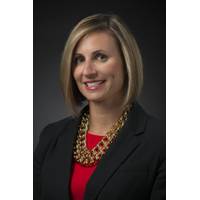
Brandi Smith Named VP of Newport News' Columbia-Class Program
class, engineering lead for Integrated Digital Shipbuilding, director of quality control responsible for all nuclear, non-nuclear, and non-destructive testing inspectors and most recently serves as Columbia-class construction program director.She earned a mechanical engineering degree from North Carolina State University and an MBA degree from The College of William and Mary
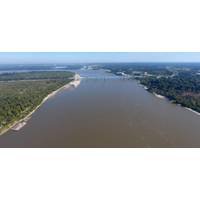
Larger-than-average GoM ‘Dead Zone’ Expected
is producing its own forecast, using a suite of NOAA-supported hypoxia forecast models jointly developed by the agency and its partners – teams of researchers at the University of Michigan, Louisiana State University, William & Mary’s Virginia Institute of Marine Science, North Carolina State University, and Dalhousie University and the USGS, who provided the loading data for the models. The NOAA forecast integrates the results of these multiple models into a separate average forecast and is released in coordination with these external groups, some of which are also developing independent
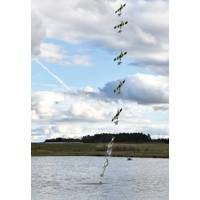
Drones for Coastal Enviro Management
high-resolution cameras and were able to identify animals in the water, in this example jellyfish, as well as birds in flight.In addition to the field results from MBARI, and other science users, the workshop presented new ideas for drones that can operate both in the air and underwater. North Carolina State University presented concepts for cross-domain autonomous vehicles (XAVs). With DARPA sponsorship and a partnership with Teledyne Scientific, this team built a fixed wing drone that can fly and swim. This system, dubbed EagleRay, was developed and tested extensively between 2015 and 2016. The EagleRay
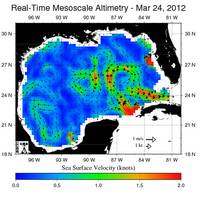
New Research on Gulf of Mexico Loop Current
will perform assessments of existing Gulf of Mexico forecasting systems to test the performance and sensitivity of current models in resolving both surface and subsurface circulation and to evaluate long-range prediction capabilities. Award Amount: $2,100,946Project Director: Ruoying He (North Carolina State University)Project Team Affiliation: North Carolina State University in cooperation with Centro de Investigación Científica y de Educación Superior de Ensenada (Center for Scientific Research and Higher Education at Ensenada), Chevron, Florida State University, Massachusetts

Olis Robotics Hires Levedahl
us as we build out our team.”With a focus in conducting and managing both fundamental research and end-to-end system development, Levedahl leverages a diverse range of engineering experiences to identify problems, formulate solutions and achieve results. Levedahl is a graduate of North Carolina State University with a Bachelor of Science in Aerospace Engineering. Following his Bachelor of Science, Levedahl received two Masters, one in Aerospace and another in Electrical Engineering. He then went on to obtain his PhD in Aerospace Engineering. His experience includes modeling and control of underwater

Students Face Off in Underwater Competition
School; California Institute of Technology; California State University, Fullerton; California State University, Los Angeles; Cornell University; Embry-Riddle Aeronautical University; Georgia Institute of Technology; Gonzaga University; Kennesaw State University; Montana State University; North Carolina State University; North Dakota State University; Oregon Institute of Technology; Prairie View A&M University; Project Radian; San Diego City College; San Diego State University; University of Arizona; University of California Riverside; University of Central Florida; University of Colorado Boulder



 February 2024
February 2024





